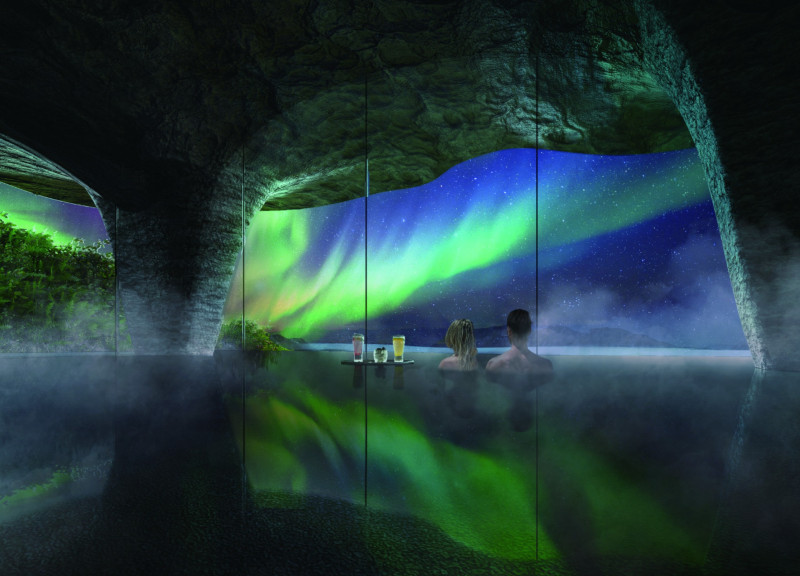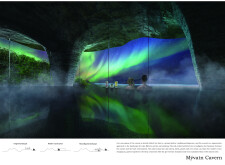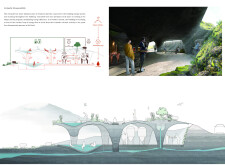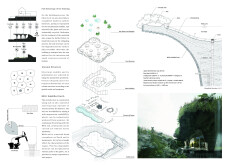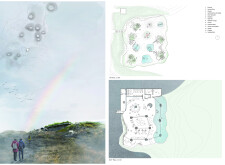5 key facts about this project
## Myvatn Cavern Architectural Design Project
The Myvatn Cavern is located near Lake Myvatn in Iceland and is designed to harmonize with the surrounding natural landscape while facilitating community engagement. The intent is to create communal spaces that promote interaction between people and their environment, with a strong focus on sustainability and ecological balance. The design concept is formulated as "double-folded," representing both a shelter for diverse species and a regenerative approach to the local ecosystem.
### Spatial Dynamics and User Interaction
The layout features a labyrinthine design that encourages exploration and social engagement. Key spatial elements include geothermal pools offering immersive experiences with the natural environment, as well as communal areas designed to facilitate varied activities. These spaces allow for unobstructed views of the landscape, reinforcing the connection between the interior and exterior. Additionally, green roofs serve dual purposes: they contribute to building insulation and promote local biodiversity.
### Material Innovation and Environmental Integration
Incorporating sustainable practices, the Myvatn Cavern utilizes materials such as Magnesium Oxide for soil stabilization, recycled wood from existing structures, glass for transparency and interaction with the outdoors, and locally sourced stones for structural integrity. The integration of vegetation into the design not only enhances aesthetic appeal but also supports ecological health. The building harnesses geothermal energy to optimize its energy usage, tapping into Iceland's abundant renewable resources while minimizing environmental impact.


